-
 +41 +7
+41 +760% of Earth's Food Crops Aren't Being Visited by Enough Pollinators
Some of our favorite food crops around the world aren't reaching their full potential because of fewer visits from the insects that pollinate them, a new study has found.
-
 +29 +2
+29 +2The Hidden Butterfly Trade
How the lucrative market could spark conservation.
-
 +1 +1
+1 +1Roar of cicadas was so loud, it was picked up by fiber-optic cables
Brood X made itself known in a way that could change how we monitor insect populations.
-
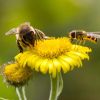 +30 +4
+30 +4More wildlife-friendly farming needed to stop decline of insects in Britain, says report
Conservation measures over the past 30 years have failed to stop the decline of insects on British farmland, a new report shows. Populations of bees, spiders, ground beetles and hoverflies have disappeared twice as fast in areas intensely farmed for crops, according to the paper, which looked at citizen science data on more than 1,500 invertebrate species.
-
 +19 +3
+19 +3This lanternfly-egg-hunting robot could mean you have to squish fewer bugs
Designed by undergraduate students, it uses machine learning to identify egg masses on trees, and a brush-like attachment to scrap them off.
-
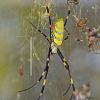 +19 +1
+19 +1Joro spiders aren’t scary. They’re shy.
Despite their intimidating appearance, the giant yellow and blue-black spiders spreading across the Southeastern U.S. owe their survival to a surprising trait: They’re rather timid. According to a new study from the University of Georgia, the Jorō (Joro) spider may be the shyest spider ever documented.
-
 +16 +2
+16 +2Soap can make humans more attractive to mosquitoes, study finds
Researchers say mosquitoes may be attracted to soap because when not feeding on blood they supplement sugar intake with nectar
-
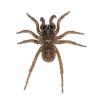 +13 +4
+13 +4Three species of extremely primitive spider discovered in China
Mesothelean spiders diverged from all other spiders long before the first dinosaurs – three species of these living fossils have just been identified in western Hunan province
-
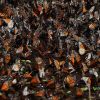 +18 +4
+18 +4Monarch butterflies lose sanctuary in Mexico as climate changes
The population of endangered monarch butterflies wintering in Mexico's Michoacan dropped by 22% in just one year.
-
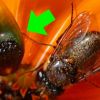 +15 +1
+15 +1This Incredible Flower Makes Fake Flies, And We Finally Know How
A flower's ability to mimic the sexually attractive traits of pollinators to lure them to its nectar has long fascinated scientists.
-
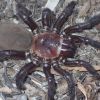 +23 +3
+23 +3Trapdoor spider: New giant species found in Australia
Australian researchers have discovered a super-sized species of trapdoor spiders found only in Queensland. The females of this rare species can live for over 20 years in the wild and grow up to 5cm long - large in trapdoor spider terms. The males grow up to 3cm. Unfortunately, much of its habitat has been lost due to land clearing, making it likely to be an endangered species, scientists said.
-
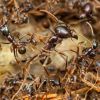 +12 +2
+12 +2How a Lone Researcher Faced Down Millions of Army Ants on the March in Ecuador
Renowned entomologist Frank Nischk remembers when the determined insects tried to invade a field station. One afternoon, I was sitting on the veranda at the small research station in the reserve. I was alone, because my botanical colleagues were busy with their work in the forest. I was sorting and preparing my collection: dried crickets, the fruits of two weeks’ work in the cloud forest. Then I heard a swell of rustling and murmuring, and knew immediately what was moving toward me.
-
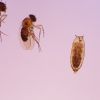 +15 +3
+15 +3The first wiring map of an insect's brain hints at incredible complexity
Researchers have mapped the more than 500,000 connections in the intricate brain of a fruit fly larva. This map, they say, could help scientists figure out how learning changes the human brain, too.
-
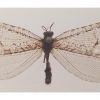 +12 +3
+12 +3Giant flying bug found at Arkansas Walmart turns out to be "super-rare" Jurassic-era insect
The giant bug was found during a trip to Walmart in 2012: "I put it in my hand and did the rest of my shopping with it between my fingers. I got home...and promptly forgot about it for almost a decade."
-
 +29 +3
+29 +3Anti-insect laser gun turrets designed by Osaka University; expected to work on roaches too
Considering we are now in the year 2023, it feels like there ought to be some better way to defend our homes from invading insects such as cockroaches than a rolled-up magazine or noxious mixtures of chemicals. Sure, there have been some novel devices over the years, but never something that felt like the true future of pest control.
-
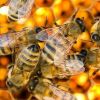 +4 +1
+4 +1US approves world’s first vaccine for declining honey bees
The US has approved use of the world's first vaccine for honey bees. It was engineered to prevent fatalities from American foulbrood disease, a bacterial condition known to weaken colonies by attacking bee larvae. The US Department of Agriculture (USDA) approved a conditional license for the vaccine this week, according to the biotech firm behind its development.
-
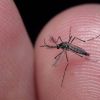 +26 +4
+26 +4'Super' mosquitoes have now mutated to withstand insecticides, scientists say
One of the most vilified pest species on the planet continues to outsmart the ways in which humans attempt to get rid of them. "Super" mosquitoes have evolved to withstand insecticides, according to new research -- and the most "sobering" finding is the high rate in which a species known for carrying disease has developed mutations.
-
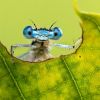 +7 +2
+7 +2Insects may feel pain, says growing evidence – here’s what this means for animal welfare laws
In one of the largest studies of its kind we looked at the evidence from over 300 published reports.
-
 +20 +6
+20 +6Climate change is hammering insects — in the tropics and everywhere else: Scientists
Climate change-induced higher temperatures, shifting seasons, extreme drought and precipitation events, extended heat waves and fires are all impacting insects, with resonating effects on habitats, other wildlife and humanity.
-
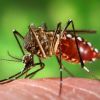 +13 +3
+13 +3Turns Out Fighting Mosquitoes With Mosquitoes Actually Works
New evidence indicates that an effort to stamp out disease-carrying insects is working. The key? Mosquitoes genetically engineered to kill off their own kind.
Submit a link
Start a discussion




















